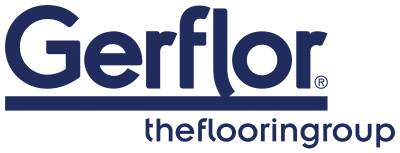Enterprise Performance Management (EPM) is a strategic tool for companies wishing to improve their performance and achieve their objectives. But did you know that its effectiveness can be increased tenfold when integrated with other business management tools, such as customer relationship management (CRM) or enterprise resource planning (ERP) systems?
In this article, we explore the key benefits of integrating EPM with other tools, as well as concrete examples to illustrate its impact on overall business performance.
Improved decision-making
One of the main advantages of EPM is its ability to collect and analyze strategic data through key performance indicators (KPIs). However, this data sometimes remains compartmentalized when it comes from separate systems, such as a CRM for sales or an ERP for resource management. By connecting these tools to EPM, companies gain a global, unified view of their activities, enabling them to make more accurate, better-informed decisions.
For example, a company that integrates its EPM with its CRM can simultaneously analyze sales performance, customer behavior and growth opportunities. If, in a specific region, sales are increasing but production capacity is struggling to keep pace, the ERP-integrated Enterprise Performance Management software can alert teams to this imbalance. This enables decision-makers to adjust their resources in real time and optimize their operations.
By combining data from several departments, EPM becomes a central tool for guiding corporate strategy and anticipating market trends.
Automate processes for greater efficiency
Integrating EPM with tools such as CRM and ERP considerably simplifies business processes by automating data transfer and analysis. For example, sales information recorded in the CRM can be transferred directly to the EPM without human intervention. Similarly, production data from ERP can be automatically synchronized with financial forecasts.
This automation not only reduces human error, but also enables real-time reporting. Teams no longer need to spend hours extracting, consolidating and analyzing data from different systems. Everything is centralized and accessible in just a few clicks.
Take the example of a manufacturing company. By automating the import of orders from CRM into EPM, it can instantly monitor sales performance and adjust its production forecasts. This speeds up decision-making and frees up time to concentrate on high value-added tasks.
Strengthen inter-team collaboration
Integrating EPM with other management tools also promotes greater collaboration between teams. When all data is centralized and accessible through a single system, different departments can work together more fluidly.
For example, sales and finance teams can use the same indicators to plan their actions. Sales staff can share their sales forecasts from CRM with the finance department, which uses them to draw up accurate budgets. For their part, production and logistics teams can consult consolidated data from ERP and EPM to adjust their resources and avoid stock-outs.
By eliminating organizational silos, this integration aligns the various departments on common objectives. Teams work better together, communicate more effectively and are all focused on the company’s overall success.
Reduce costs and optimize resources
Integrating EPM with tools such as CRM and ERP also has a direct impact on cost reduction. By eliminating data duplication and automating processes, companies can reduce the expense of maintaining several separate systems.
What’s more, better resource planning helps avoid costly inefficiencies, such as over-stocking or under-capacity. For example, a distribution company can use CRM data to forecast sales and adjust stock levels via ERP. EPM plays a central role in consolidating this information and quickly identifying sources of waste or inefficiency.
In the long term, this integration helps to better allocate resources, reduce errors and maximize profitability.
Concrete examples of successful integration
To better understand the impact of EPM integration, here are a few concrete examples:
-
EPM & Sales performance
A company can analyze sales performance to identify its most profitable customers. This makes it possible to target marketing campaigns more effectively and invest in segments offering the greatest growth potential.
-
EPM & production resources
A manufacturing company can use EPM to plan its production resources based on sales forecasts from CRM, while taking into account capacity and inventory managed in ERP.
-
EPM & Supply Chain Management
By integrating EPM with supply chain management tools, a company can monitor logistics performance, identify difficulties and optimize transport and storage costs. Find out how to optimize your supply chain with advanced tools like EPM.
These examples show how integrated EPM is becoming a key tool for coordinating different company functions and improving overall performance.
Why should your company take action ?
Integrating Enterprise Performance Management (EPM) with tools such as CRM and ERP is much more than just a technical enhancement. It’s a strategic transformation that delivers tangible benefits at every level of the company.
It enables better understanding of interactions between departments, automates processes, promotes collaboration and reduces costs. By unifying data and offering a global view, EPM becomes a real competitive lever in a constantly evolving environment.
By unifying data and offering a global view, EPM becomes an essential competitive lever in an increasingly demanding economic environment. If you’d like to find out more about EPM solutions and how to implement them, we invite you to read our article on the fundamentals of EPM and its strategic advantages.
Conclusion
EPM is much more than a simple performance monitoring tool. Integrated with systems such as CRM or ERP, it becomes a catalyst for business efficiency and profitability.
By centralizing data, automating processes and aligning teams, integrated EPM helps companies meet their strategic challenges while staying one step ahead of the competition. Don’t let your tools operate in silos: integration is the key to maximizing your resources and successfully achieving your objectives.
Ready to take the plunge ? Contact us to find out how this solution can be tailored to your specific needs and transform the way you manage your operations.

















